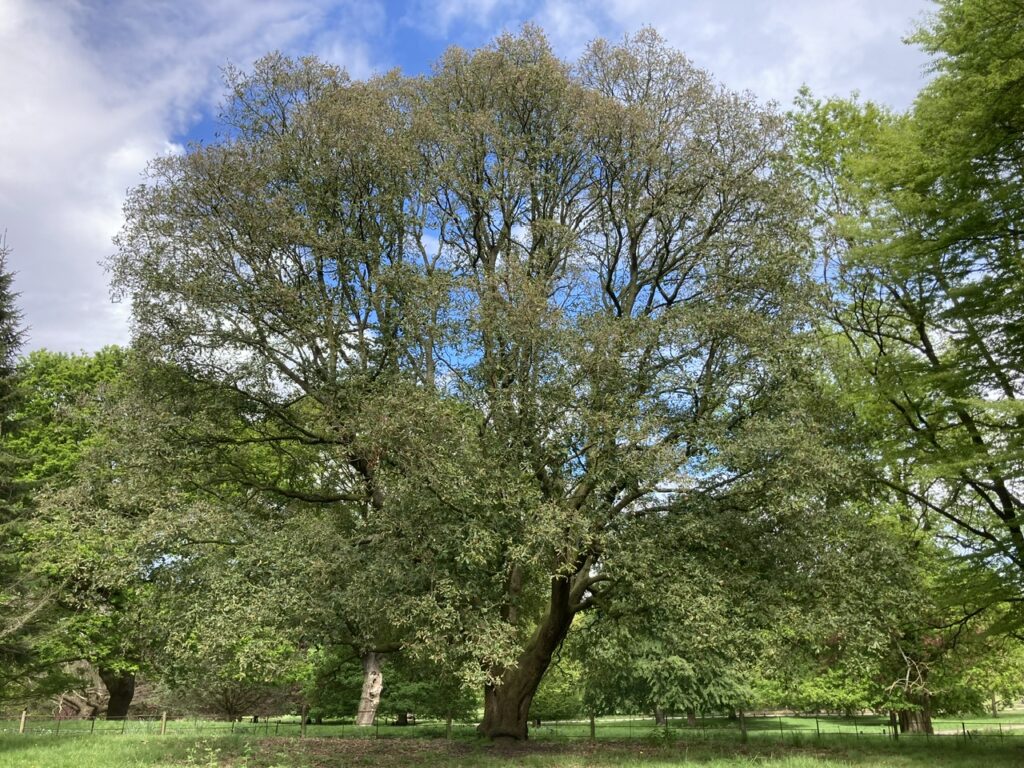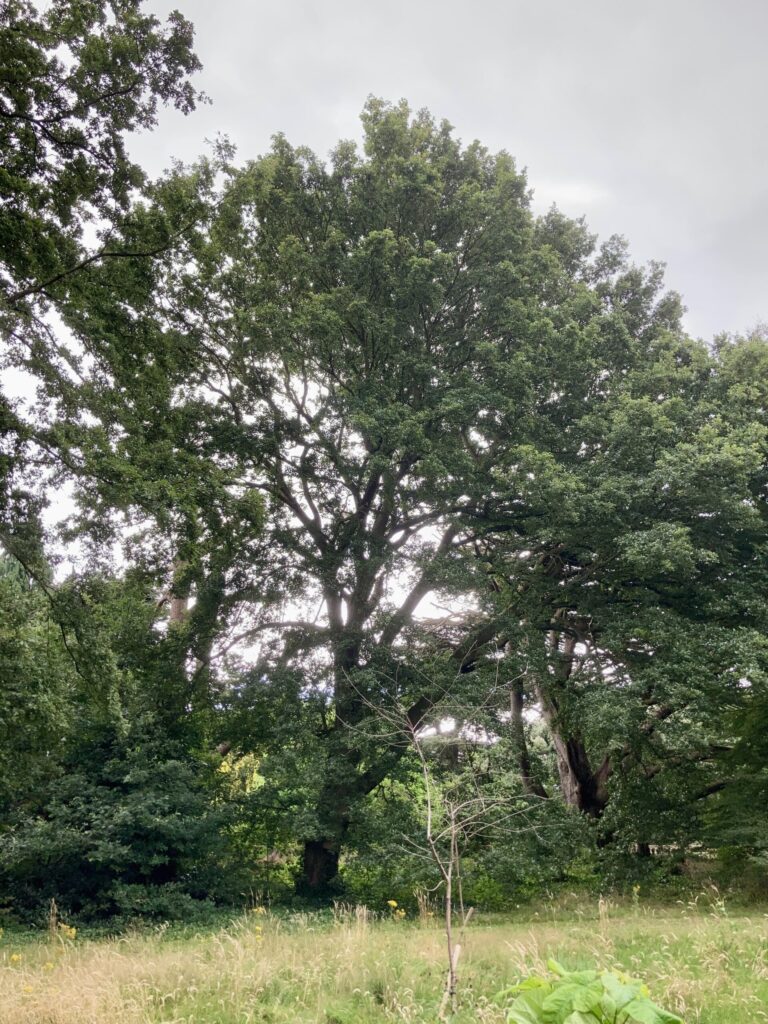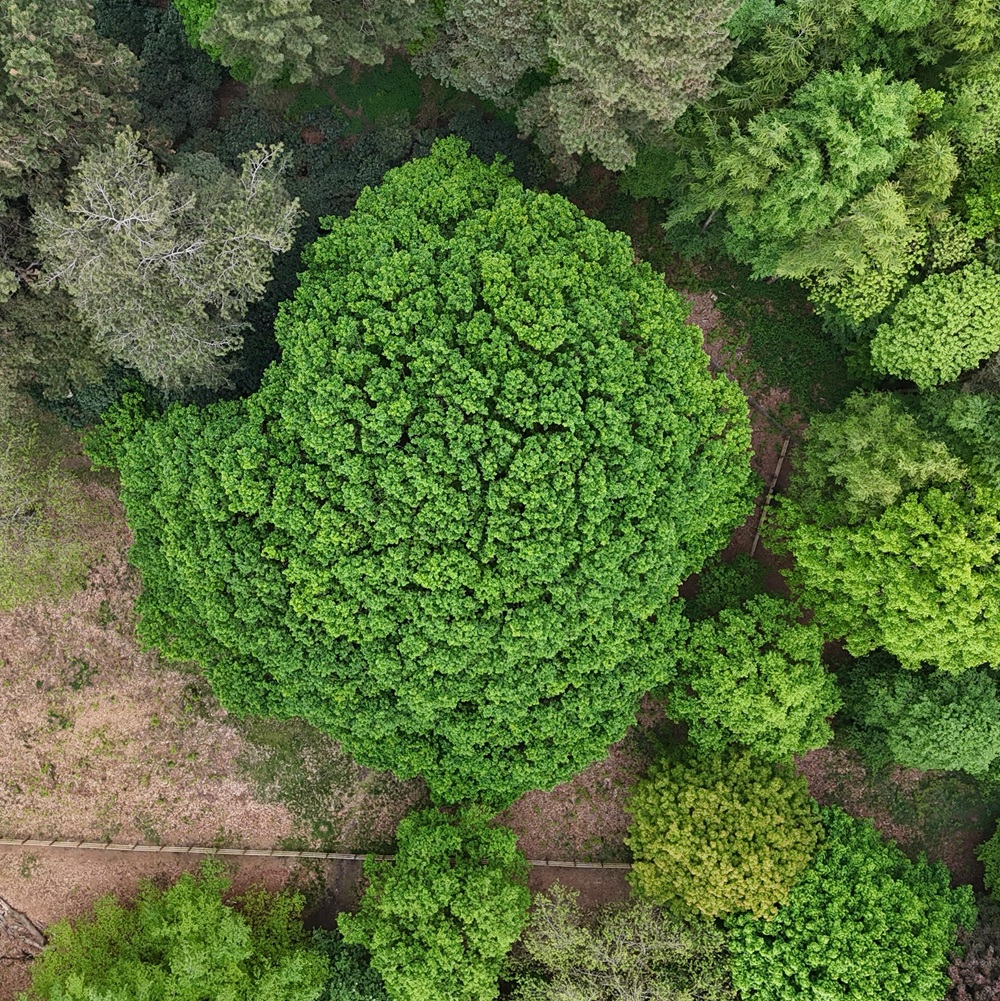The trees on this page are all members of the Fagaceae family of flowering plants, commonly referred to as the Beech Tree family. They belong to the higher Fagales order, as do the Birch and Alders in our gallery.
Oaks are a sub-family of Beech Trees, which have Acorns as their fruit.
Chestnuts are also members of the Beech family, not to be confused with Horse Chestnuts, which are not!
Oak Family

Oak Trees
Read our leaflet describing the 10 different species of Oak Trees that can be found in the Park.
These oaks stand as individual giants or form parts of historic avenues.
English Oak
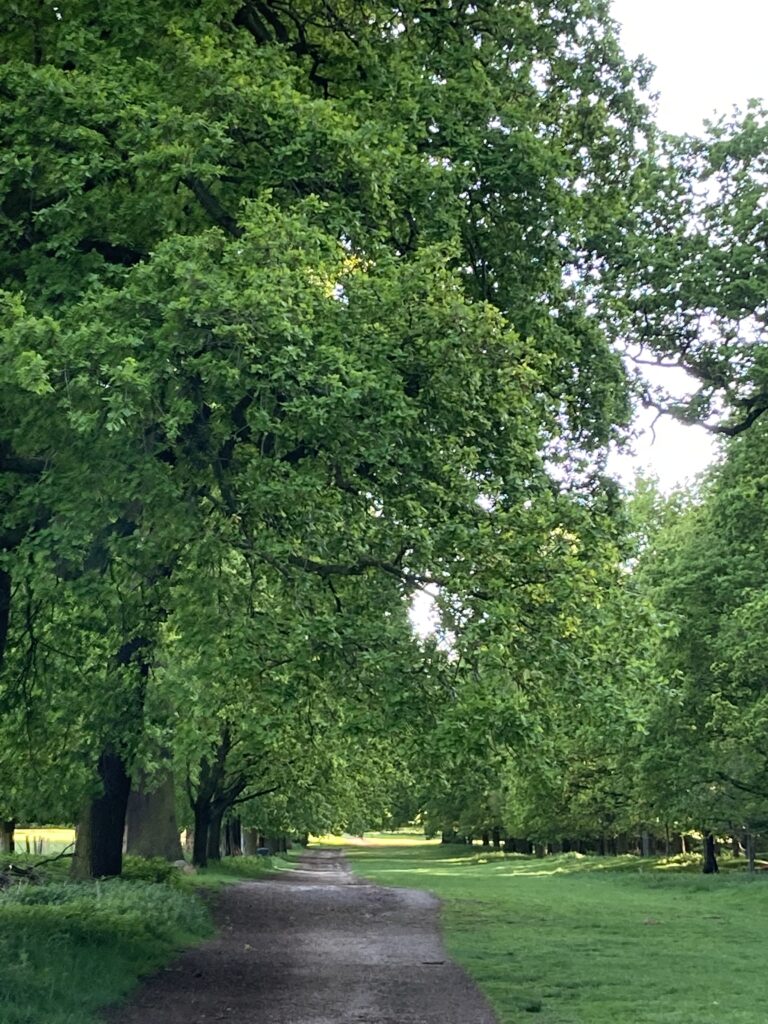
Quercus robur.
The National Tree of England. There are over 500 in the park, some are over 200 years old.
The leaves have short stems, whereas the acorns are on long stems.
Not all are “pure” English Oak, some are hybrids with the Sessile Oak – its not easy to tell them apart and are mostly labelled as English Oak on our map.
They are native to the UK.
See Tree 6 in the Mini Arboretum.
Sessile Oak
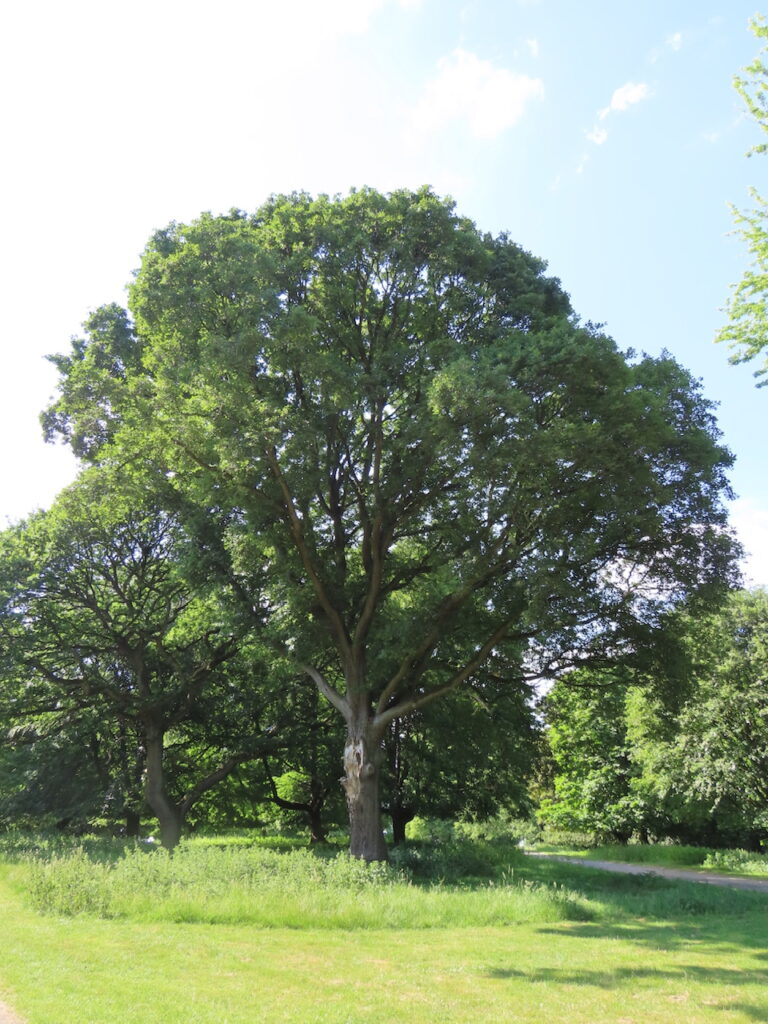
Quercus petraea.
Very similar to the English Oak, but the leaves are on stems, and the acorns are not.
Only a few are in the park.
They are the only other oaks that are native to the UK.
The picture shown is Tree 12 in the Mini Arboretum.
Pin Oak
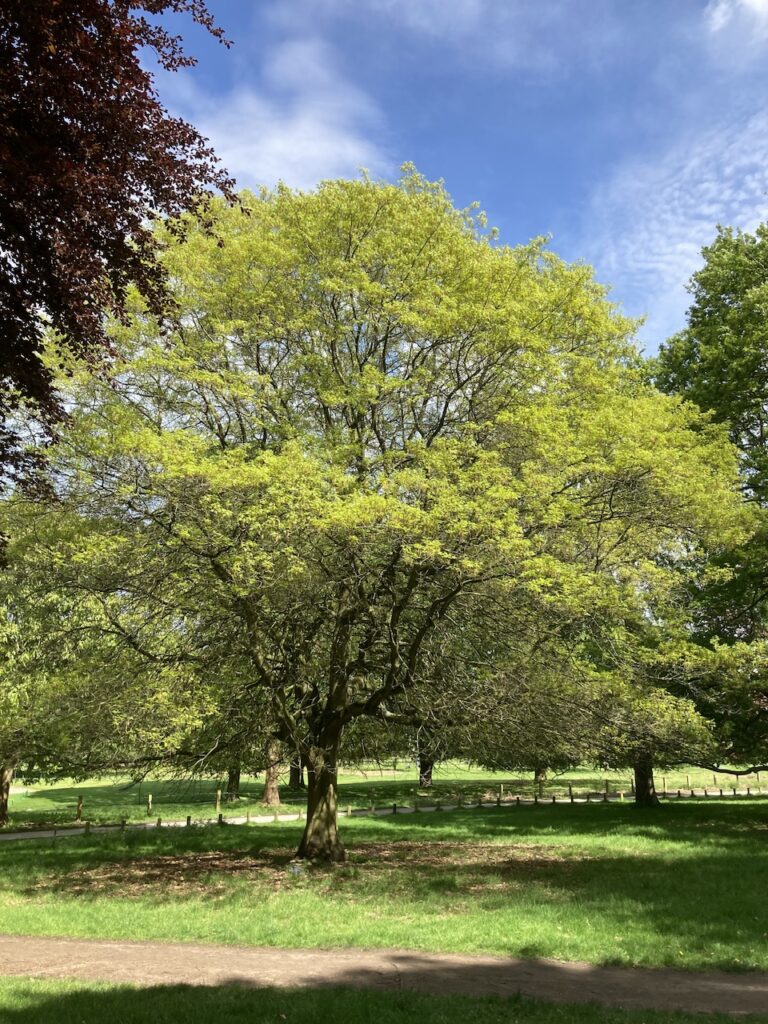
Quercus palustris.
The Pin Oak’s leaves are deeply lobed and glossy green in the summer, turning red to bronze in the fall.
The lower branches have often died back to the trunk.
Its acorns are small and brown, with a knobby cap that covers almost half of the nut.
See Tree 9 in the Mini Arboretum.
Hungarian Oak
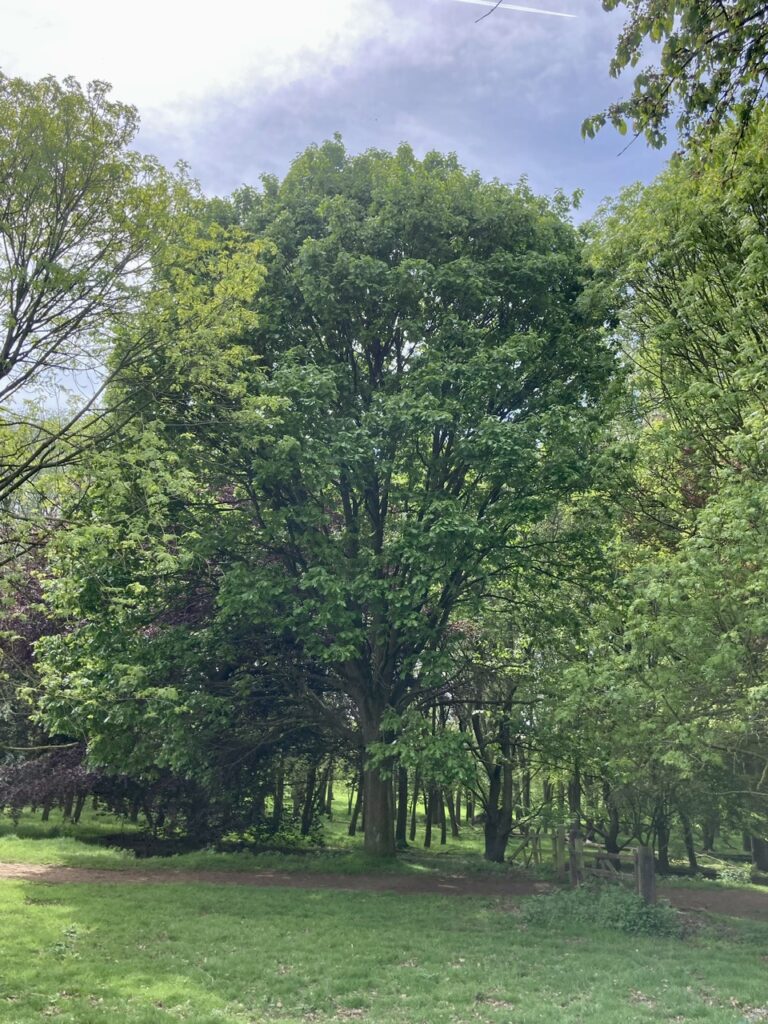
Quercus frainetto.
Described by many as the most magnificent Oak of them all.
The leaves are lobed and glossy green, and the tree produces acorns that are typically longer and more slender than those of other oak species.
Only one specimen in the park.
Cypress Oak

Quercus robur ‘fastigiata’.
Also known as a Pyramid Oak, it is a variant of the English Oak.
Cypress oak leaves are simple, alternate, and have a serrated margin. They are typically dark green and glossy, with a leathery texture, and turn reddish-brown in the fall before dropping.
Turkey Oak
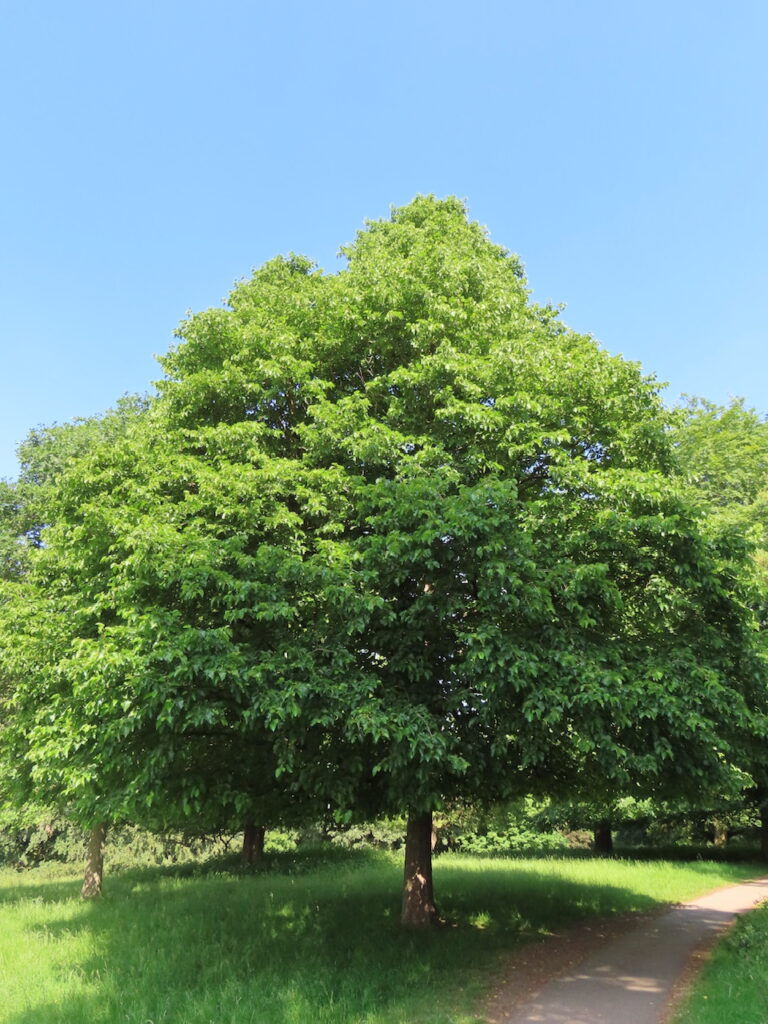
Quercus cerris.
The leaf is similar to the English Oak, but close inspection will reveal twisting whiskers on the twig where the leaf is joined.
Introduced to the UK in the 1750s.
The picture shown is Tree 22 in the Mini Arboretum.
Holm Oak
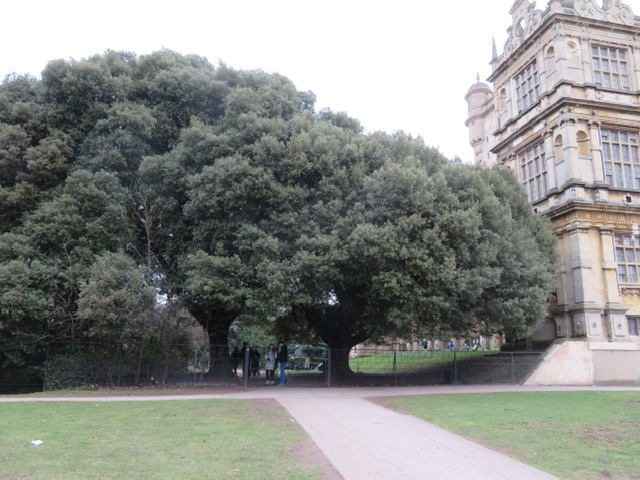
Quercus ilex.
Holm is an old English word meaning Holly. The Holm oak leaves are not lobed like the other Oaks in the park, and the tree is often confused with Holly, thus the name “Holly Oak”.
It is also an Evergreen Oak, keeping its leaves for 3 years before losing them in spring.
The Holm Oak is of Mediterranean origin and was introduced to the UK in the 1580s. This introduction coincides with the period when Wollaton Hall was being built, using the skills of Italian craftsmen. The tree’s presence symbolically links the Hall’s architecture to its Italian craftsmen.
The picture shown is Tree 30 in the Mini Arboretum.
Red Oak
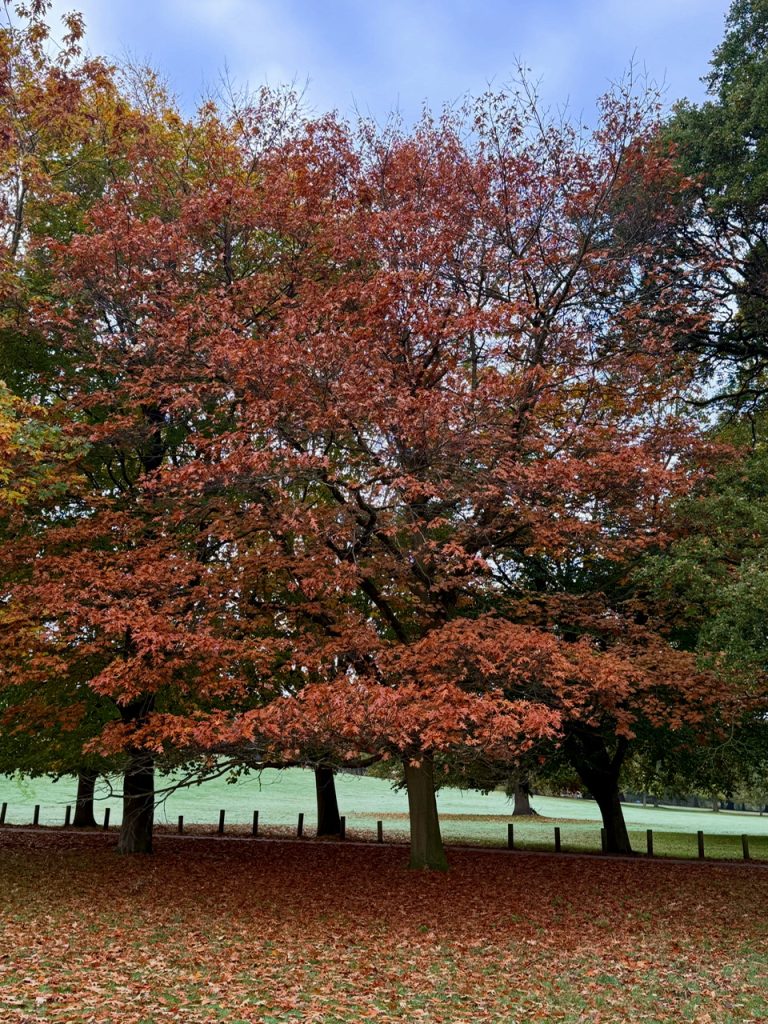
Quercus rubra.
The leaves are much larger than the English / Sessile Oak, with pointed tips. In autumn (picture) the leaves turn dark red, unlike English / Sessile Oaks.
Introduced into the UK as it is faster growing than the native oaks, reaching maturity for harvesting wood in 80-100 years.
The picture shown is Tree 1 in the Mini Arboretum.
Beech Trees
Beech

Fagus sylvatica.
Beech trees are large, deciduous trees that can grow up to 40 meters tall. They have smooth, grey bark and lobed leaves that turn a golden-brown colour in autumn.
Can live up to 400 years.
The strong wood is used in tool handles.
See Tree 7 in the Mini Arboretum.
Fern-Leaved Beech

Fagus sylvatica ‘Aspleniifolia’.
The Fern-Leaved Beech tree is a medium-sized tree, typically growing to 20-30 meters tall. It has a slender, conical crown and smooth, grey bark. The leaves are fern-like, 10-15 centimetres long, and dark green. The flowers are small and inconspicuous, and the fruit is a small, brown nut.
When branches are damaged, the new growth may revert to that of the common Beech leaf – at least one example can be seen in the formal garden.
Copper Beech
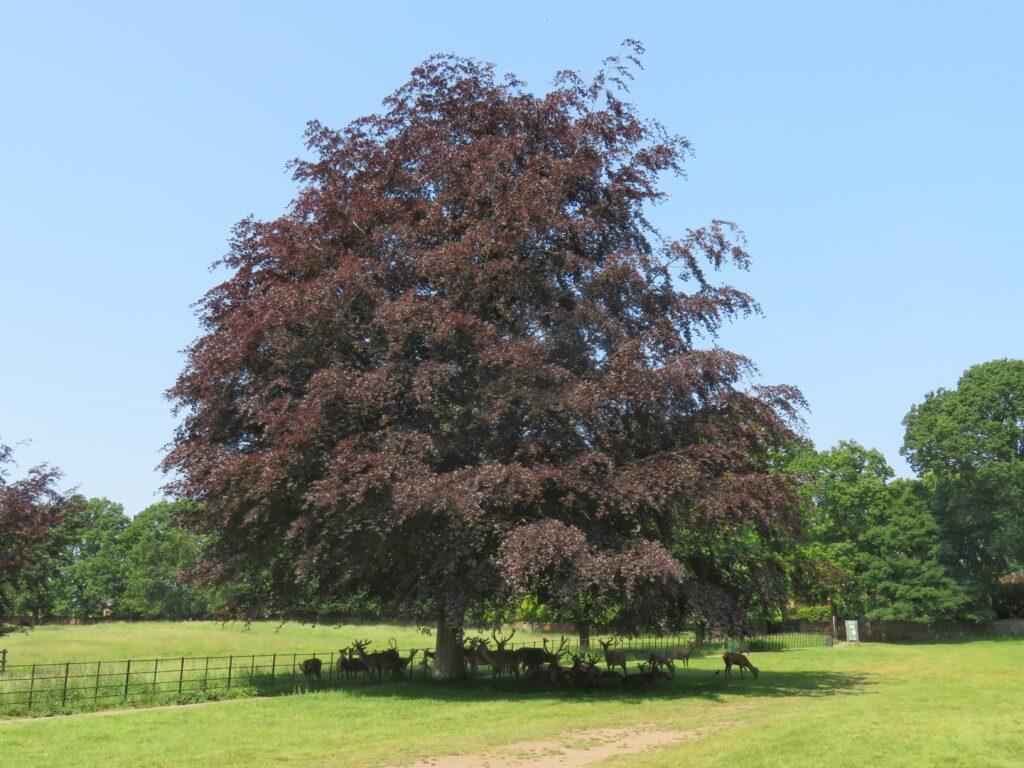
Fagus sylvatica f. purpurea.
Like a Beech, but with copper-coloured leaves!
See Tree 8 in the Mini Arboretum.
Roble Beech
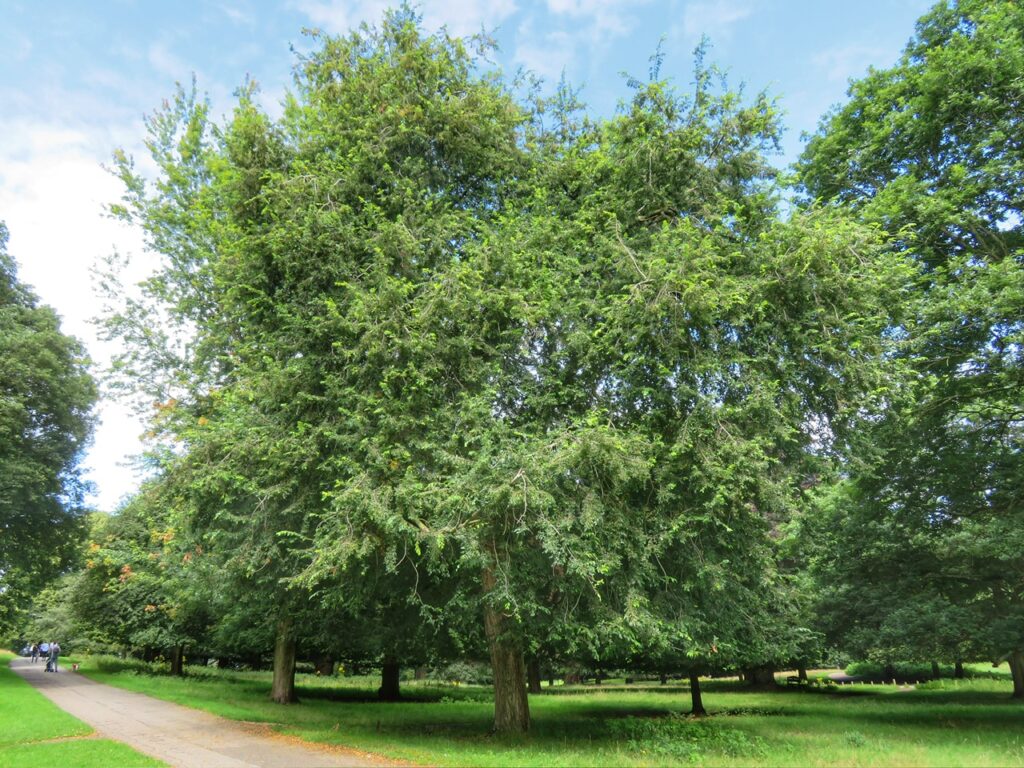
Nothofagus obliqua.
A variety of Southern Beech. Also known as Patagonian Oak.
The southern beech tree is a large, deciduous tree that can grow up to 50 meters tall. It has smooth, grey bark and glossy, dark green leaves.
The picture shown is Tree 13 in the Mini Arboretum.
Chestnut
Sweet Chestnut
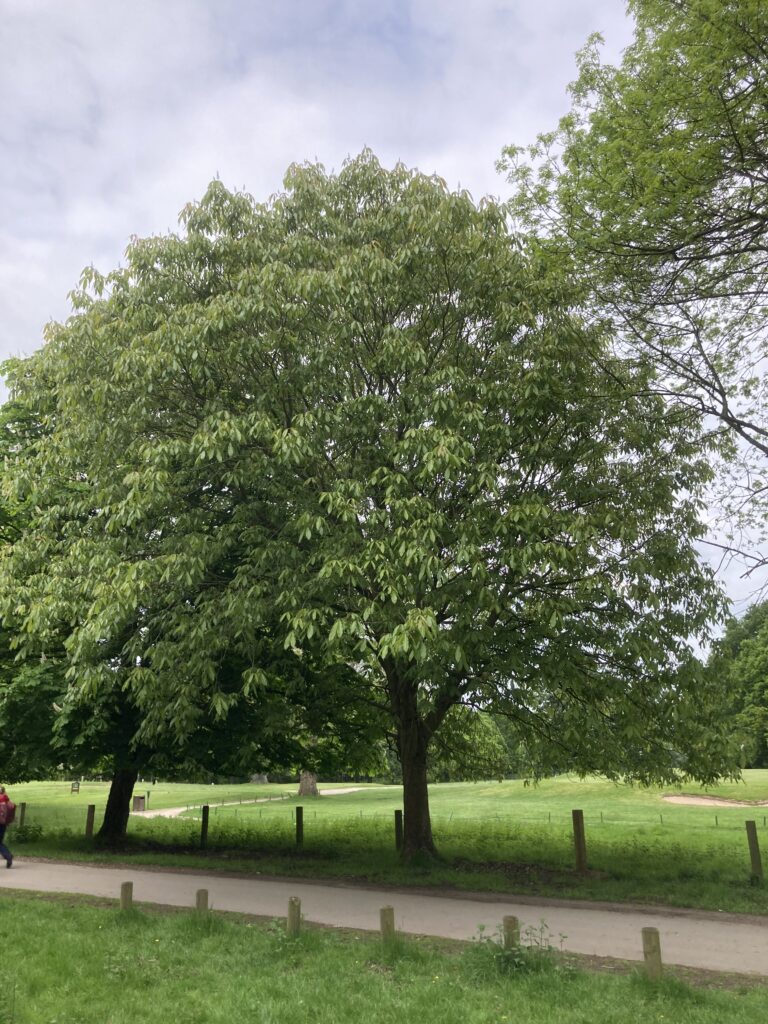
Castanea sativa.
The leaves of the sweet chestnut are lance-shaped, with a pointed tip and a serrated edge, and are a glossy, dark green colour. The fruit is very popular with the deer in Autumn, part of their staple diet.
An entirely different species from the Horse Chestnut, and can live to over 600 years old.
See also Tree 19 in the Mini Arboretum as well as Sweet Chestnut Avenue.
Arbour Oak

The Arbour Oak on Arbour Hill in Wollaton Park is a magnificent Oak tree with a girth of nearly 7 meters and a spread of 40 meters. It is estimated to be over 550 years old, making it the oldest tree in the park.
- It is a hybrid between an English Oak and Sessile Oak (Quercus x rosacea).
- It is thought to have started life in the 1460s, making it older than Wollaton Hall, which was built in 1588.
- The tree was pollarded in the 17th century, which means that its branches were regularly cut back to encourage new growth.
The following drone shot (taken with permission) shows a healthly crown.
Photographs used in the Tree Galleries were taken in Wollaton Park and are reproduced with the original artist’s permission.
Copyright © for each picture remains with the original artist, who is duly acknowledged for their contribution.
Contributors include Colin Robbins, Wendy Martin, and Chris Golightly.
Tree descriptions were generated with the assistance of Google Bard.


